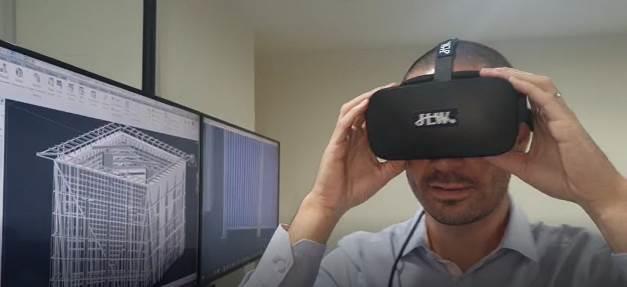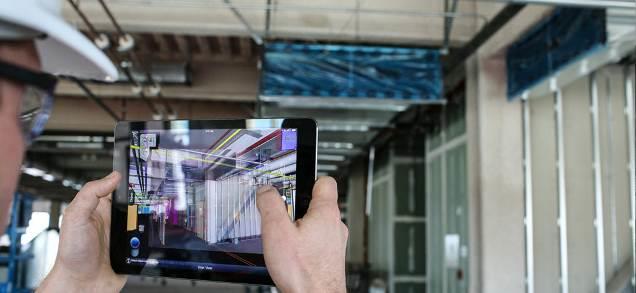Engineering & Technology Capabilities
Virtual Reality (VR) Technology
Virtual Reality (VR) and the creation of immersive virtual environments are transforming how construction project stakeholders visualize, understand, and engage with their projects—enhancing decision-making and overall project success.
By leveraging VR technologies, teams can significantly improve the effectiveness and efficiency of detailed design, project preparation, planning, and construction execution. This leads to better coordination, fewer errors, and more streamlined project delivery.
We integrated Virtual Reality (VR) technology into our operations in 2017. Since then, we have used VR headsets to immerse both our team and clients into complex areas of our projects through detailed 3D models. This virtual walkthrough experience allows for full-scale visualization of plant rooms and densely packed spaces, enhancing spatial awareness and enabling better understanding of MEP systems, layouts, and access provisions as represented in our BIM models.


For visual collaboration and coordination, JWL utilizes a combination of advanced hardware and software to provide clients with an immersive digital experience. This allows stakeholders to navigate through a virtual environment and better conceptualize construction sequencing and project activities in real-time.
Immersive Visualization for Office Environments
For safety and enhanced engagement, JWL utilizes Oculus VR technology during office-based BIM meetings and presentations. This includes visual coordination and collaboration sessions, allowing participants to interact with project models in an immersive and controlled environment.

Immersive Visualization for Actual Construction Site Environments
For on-site construction environments, JWL prefers the use of HoloLens technology, which seamlessly integrates virtual models with the physical world. This enables users to pre-visualize and compare the digital design with the actual constructed MEP systems—eliminating the need for laser scanning and enhancing real-time accuracy and alignment.



